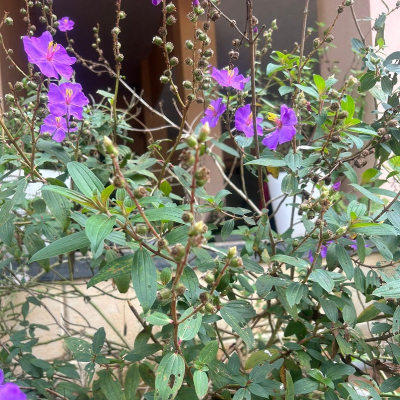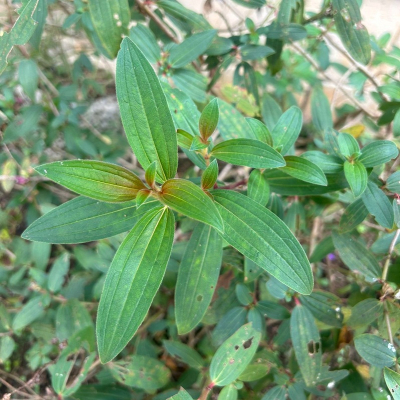Distribution and Habitat: Throughout India
Botany: A much branched shrub some times reaching 2.4 m height. Young branches, petioles, and nerves of the leaves beneath densely clothed with appressed flat lanceolate acuminate paleaceous hairs.
- Leaves: Somewhat rigid, 5-11.5 x 1.6-4.5 cm, ovate-oblong or lanceolate- oblong, acute, 5 nerved, the outer nerves fine and close to the margin, base usually rounded. Petioles 1-1.3 cm long.
- Flowers: Terminal corymbose, 1-5 flowered panicles. Pedicels about as long as the calyx tube. Calyx clothed all over with silvery lanceolate scaly hairs. Petals 2-2.5 cm long, obovate, rounded or truncate at the apex, narrowed at the base. Filaments yellow. Anthers alternately yellow and red.
- Fruits: 1.3 cm long, ovoid, bursting irregularly usually in a circle and exposing the 5 large purplish black pulpy placentas covered with numerous minute seeds.
Properties: anti-inflammatory, anti-diarrheal, cytotoxic and anti-oxidant properties.
Chemical constituents: Cyanidin (Cy)-3-glucoside and Cy-3,5-diglucoside, ellagic acid, β-sitosterol, melastomic acid etc. Leaves and flowers contain 32-methyl-1-tritriacontanol, ursolic acid, p-hydroxybenzoic acid, gallic acid and kaempferol.
Uses: Diarrhea and dysentery, toothache, stomach ache etc
Propagation: Seeds and stem cuttings




